This article was co-authored by Pippa Elliott, MRCVS. Dr. Elliott, BVMS, MRCVS is a veterinarian with over 30 years of experience in veterinary surgery and companion animal practice. She graduated from the University of Glasgow in 1987 with a degree in veterinary medicine and surgery. She has worked at the same animal clinic in her hometown for over 20 years.
There are 7 references cited in this article, which can be found at the bottom of the page.
This article has been viewed 31,102 times.
Lymphocytes are white blood cells that are a major part of the immune system. They help a dog’s body fight infection by producing antibodies and other infection-fighting substances. When lymphocytes become cancerous, they form a lymphoma. Compared with other dog breeds, Boxers are more prone to developing lymphomas.Lymphoma can progress rapidly and make your Boxer very sick, so early treatment is essential.[1]
Steps
Detecting Lymphoma in Your Boxer
-
1Look for enlarged lymph nodes. Lymph nodes are located throughout your Boxer’s body and are part of his lymphatic system, which also has vessels that transport infection-fighting substances. Lymph nodes are the most common sites for lymphoma.[2]
- Some lymph nodes are easier to find than others. Lymph nodes below your Boxer’s jaw and behind his knees will be easily visible when enlarged.
- Lymphoma can spread to multiple lymph nodes very rapidly.
-
2Touch your Boxer’s lymph nodes. Lymph nodes affected with lymphoma will feel hard and rubbery. They will not be painful, though.[3]Advertisement
-
3Check for swelling on your Boxer’s legs or face. The lymphatic system’s vessels help keep lymphatic fluid moving throughout your Boxer’s body. With enlarged lymph nodes, this fluid builds up in different places. If your Boxer has swollen lymph nodes in his legs, fluid will accumulate near his ankles. Swollen lymph nodes near his face could cause his face to look puffy from fluid buildup.[4]
-
4Observe signs of digestive upset. Part of your Boxer’s immune system is located in his gastrointestinal (GI) tract. If he has GI lymphoma, he will show signs of digestive upset, including vomiting and watery diarrhea. Your Boxer will also have a reduced appetite, which could lead to weight loss.[5]
- GI lymphoma makes up less than 10% of all canine lymphomas.
-
5Examine your Boxer’s skin and mouth. One type of lymphoma, called cutaneous lymphoma, can develop on the skin and in the mouth. If your Boxer has cutaneous lymphoma, his skin will initially have patches that are dry, red, itchy, and flaky. His skin can then become ulcerated and thick. In the mouth, cutaneous lymphoma can cause red gums and ulcerations in the roof of the mouth.[6]
- Healthy, noncancerous gums are pink.
-
6Observe your Boxer’s breathing. Lymphoma can also form in the thymus, which is a gland located beneath your Boxer’s sternum. If this gland becomes enlarged, fluid can accumulate in his chest, making breathing difficult.[7] He may start breathing more heavily.
-
7Take your Boxer to your vet. Your vet will confirm a lymphoma diagnosis. To make the diagnosis, they will physically examine your Boxer and perform some diagnostic tests. During the appointment, give your vet a detailed history of your Boxer’s overall health and what lymphoma symptoms you have noticed. The more information you can provide, the better your vet will be able to make a diagnosis.[8]
- Fine-needle aspiration (FNA) of an enlarged lymph node is a quick, painless, and inexpensive way to diagnose lymphoma. A long, thin needle is used to take a sample of cells. If your vet thinks the lymphoma has spread, they may perform ultrasound-guided FNAs of some internal organs (e.g., intestines, bone marrow).
- A biopsy is the ‘gold standard’ for diagnosing lymphoma, since it provides more accurate information than an FNA about the cancer.[9] Your vet will determine whether to do an FNA or a biopsy.
- Other diagnostic tests include bloodwork, urinalysis, chest x-rays, and abdominal ultrasound. These tests will help your vet determine where the lymphoma has spread to in your Boxer’s body.
Treating Your Boxer’s Lymphoma
-
1Learn what to expect with lymphoma treatment. In most cases, canine lymphoma is not curable. The main goal of lymphoma treatment is remission: the temporary disappearance of cancer symptoms.[10] The treatment plan your vet devises will reduce your Boxer’s tumor burden and improve his quality of life, but will probably not cure him.
- Dogs in remission can live very happy lives, so do not be discouraged over the lack of a cure for your Boxer’s lymphoma.
-
2Begin treatment as soon as possible. Even if your Boxer’s lymph nodes are really large, he may not feel or look that sick when his lymphoma is diagnosed. Do not wait until he looks sick to start treatment, though! Without prompt treatment, the lymphoma could spread rapidly, decreasing the chances of remission and survival.[11]
-
3Allow your vet to administer chemotherapy. Systemic chemotherapy is the preferred treatment for lymphoma. A combination of chemotherapy drugs is usually given at the same time.[12] Your vet will determine which set of chemotherapy drugs to give your Boxer, and how often to give them.
- Doxorubicin is a chemotherapy drug used to treat lymphoma. Between 70 and 90% of dogs treated for lymphoma with a doxorubicin-based treatment plan achieve remission.
- Most dogs tolerate chemotherapy very well, so your Boxer will probably not suffer serious side effects during treatment.[13]
- Serious side effects, which occur in only about 5% of canine lymphoma cases, include diarrhea, vomiting, extreme tiredness, and changes in urination (e.g., blood in urine).
- Tell your vet about any negative side effects your Boxer experiences.
-
4Consider other treatment options. Surgery and radiation therapy are sometimes used with chemotherapy to treat lymphoma in Boxers. For example, surgery may be effective in removing GI lymphoma. However, if your Boxer has GI lymphoma that has spread throughout the GI tract, he is likely very ill and would not gain much benefit from treatment.[14]
- Surgery or radiation therapy, when combined with chemotherapy, can be effective if your Boxer has only a single lymphoma.
- Prednisone, which is a steroid, can treat lymphoma by killing cancer cells. It is inexpensive and can be given by mouth.[15]
- Discuss these other treatment options with your vet.
-
5Have your vet reduce fluid accumulation. If your Boxer has fluid accumulation, your vet will need to drain that fluid as part of the treatment plan.[16] They will use specialized equipment to remove the fluid from your Boxer’s body. Fluid removal may help your Boxer breathe a little easier and feel more comfortable overall.
-
6Monitor your Boxer for signs of infection. Chemotherapy could make your Boxer more susceptible to developing infections. Common signs of infection include digestive upset (e.g., vomiting, diarrhea, loss of appetite), weakness, tiredness, and fever.[17] Take your Boxer to your vet for treatment if he develops an infection.
-
7Schedule regular appointments with your vet. Lymphoma treatment is long term. Your vet may want to see your Boxer as often as once a month to monitor his treatment progress.[18] Even if the appointments are not monthly, regular veterinary visits will be important to keep your Boxer as healthy as possible during treatment.
Understanding Cancer Remission
-
1Learn about the different types of remission. When your Boxer enters remission, his lymphoma will be reduced, but not completely gone. If he is in complete remission, there will not be any detectable cancer. If he is in partial remission, his tumor burden will be detectable, but reduced by about at least 50%.[19]
- Your vet will perform different tests to detect the cancer.
- How long your Boxer stays in remission depends on different factors, such as the primary site of the lymphoma and how far it has spread.
-
2Monitor your Boxer during remission. With complete remission, your Boxer will probably be feeling pretty good. He’ll probably want to eat, run, and play like he used to.[20] Your Boxer may not be quite so lively if he’s in partial remission, but will definitely be feeling better.
- Take notice if your Boxer starts looking unwell, or if his lymph nodes start swelling up again. These signs could indicate a relapse, meaning the lymphoma has come back.
-
3Have your Boxer treated if he has a relapse. More than likely, your Boxer will have a treatment relapse. Your vet will need to treat him with chemotherapy again. Be mindful, though, that the tumor cells will become more resistant to chemotherapy with each relapse.[21]
- When your Boxer’s lymphoma no longer responds to chemotherapy, your vet will adjust the treatment plan and focus more on keeping him comfortable.
Warnings
References
- ↑ https://www.dvm360.com/view/treating-lymphoma-dogs-and-cats
- ↑ http://www.ivghospitals.com/service/oncology/canine-lymphoma/
- ↑ https://vet.purdue.edu/pcop/canine-lymphoma-research.php
- ↑ https://vet.purdue.edu/pcop/canine-lymphoma-research.php
- ↑ http://www.petmd.com/dog/conditions/cancer/c_dg_lymphoma?page=show
- ↑ https://vet.purdue.edu/pcop/canine-lymphoma-research.php
- ↑ http://www.merckvetmanual.com/mvm/circulatory_system/canine_lymphoma/overview_of_canine_lymphoma.html
- ↑ http://www.petmd.com/dog/conditions/cancer/c_dg_lymphoma?page=show
- ↑ http://www.merckvetmanual.com/mvm/circulatory_system/canine_lymphoma/overview_of_canine_lymphoma.html
- ↑ https://vcahospitals.com/know-your-pet/lymphoma-in-dogs
- ↑ https://vcahospitals.com/know-your-pet/lymphoma-in-dogs
- ↑ http://www.merckvetmanual.com/mvm/circulatory_system/canine_lymphoma/overview_of_canine_lymphoma.html
- ↑ https://vet.purdue.edu/pcop/canine-lymphoma-research.php
- ↑ http://www.merckvetmanual.com/mvm/circulatory_system/canine_lymphoma/overview_of_canine_lymphoma.html
- ↑ https://www.dvm360.com/view/treating-lymphoma-dogs-and-cats
- ↑ http://www.petmd.com/dog/conditions/cancer/c_dg_lymphoma?page=show
- ↑ https://www.vetinfo.com/common-dog-infection-symptoms.html
- ↑ http://www.ivghospitals.com/service/oncology/canine-lymphoma/
- ↑ https://vet.purdue.edu/pcop/canine-lymphoma-research.php
- ↑ http://www.ivghospitals.com/service/oncology/canine-lymphoma/
- ↑ http://www.ivghospitals.com/service/oncology/canine-lymphoma/
- ↑ https://www.dvm360.com/view/treating-lymphoma-dogs-and-cats
- ↑ https://www.dvm360.com/view/treating-lymphoma-dogs-and-cats
- ↑ http://www.petmd.com/dog/conditions/cancer/c_dg_lymphoma?page=show
About This Article
To treat lymphoma in boxers, take your dog to the vet to confirm the diagnosis and start treatment as soon as possible. Your vet will probably suggest systemic chemotherapy, which is the preferred treatment for lymphoma. A combination of chemotherapy drugs will be administered and your vet will work with you to schedule follow up appointments to continue the therapy. During chemotherapy, monitor your boxer closely for signs of infection, such as digestive problems, weakness, tiredness, and fever, and contact your vet immediately if you notice them. To learn about different types of lymphoma remission from our Veterinary co-author, read on!




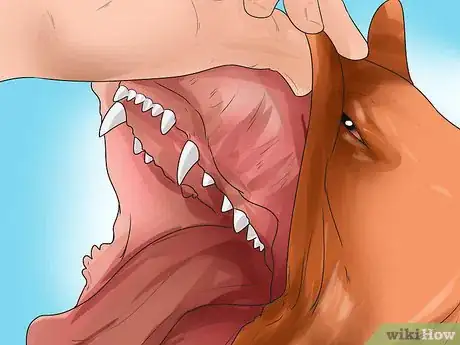
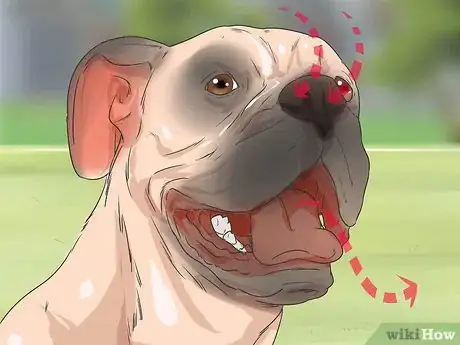
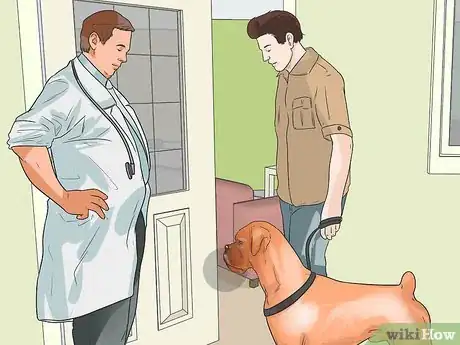
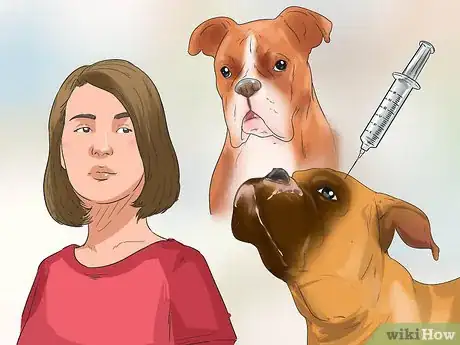
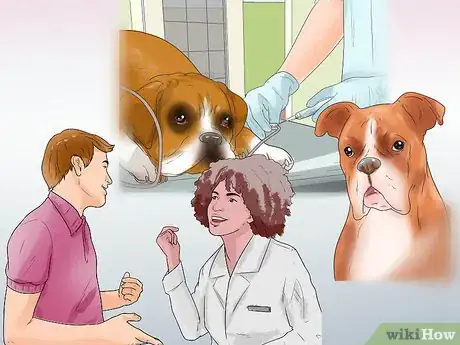
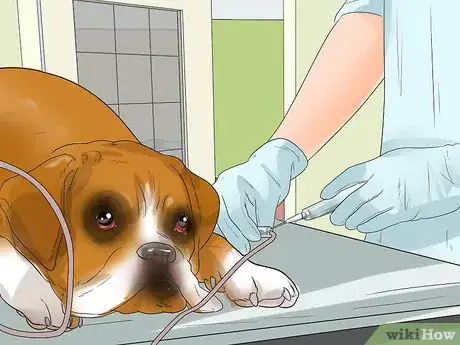

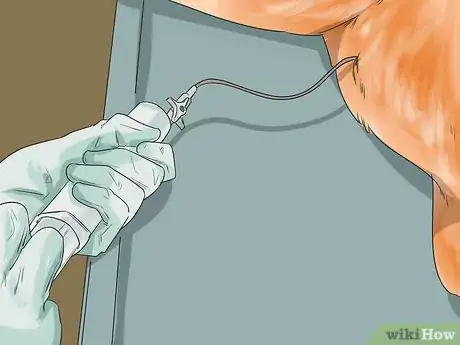
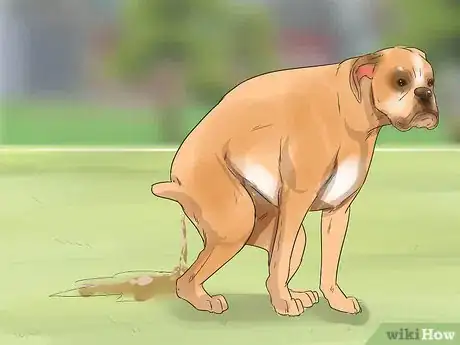

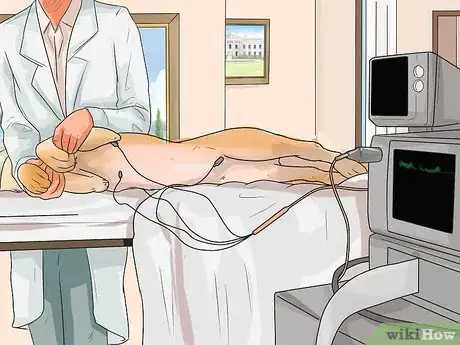

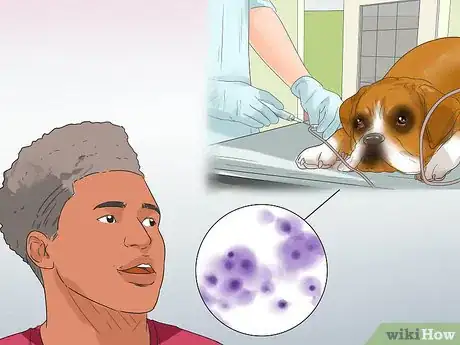





















































Medical Disclaimer
The content of this article is not intended to be a substitute for professional medical advice, examination, diagnosis, or treatment. You should always contact your doctor or other qualified healthcare professional before starting, changing, or stopping any kind of health treatment.
Read More...